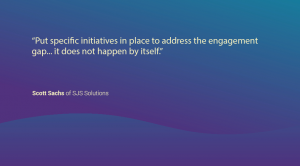The Cost of Failure is the Cost of Learning
When an employee makes a mistake, it’s easy to confuse the cost of the mistake with lack of performance. This in and of itself is the real mistake. Let’s say an employee makes a $ 1,000 gaff. Ask yourself, how much would you have had to spend on training so that mistake would have never happened. Odds are it will always be more than the mistake cost itself. It’s still a cost anyway you look at it. However, the experiential learning gained from the mistake is more valuable than the mistake itself.
Think of your childhood and the things you did before you knew they would hurt. Then one day it finally happened, you got hurt doing the thing you shouldn’t have been doing. Now, you always knew you could get hurt and someone probably told you would, but it wasn’t until you actually got hurt that you really learned. This is experiential learning associated with failure. You will remember that pain for the rest of your life.
You have to allow your employees to fail if you want them to learn. Be smart about the experiential learning you give them. If they fail and it costs you money, just think of it as training costs. Don’t look at what was lost, look at what was gained.
Prevent Catastrophe
Let’s say you’re trying to get a three-person team to work together on a project that has a deadline of 15 days from now. You want to use this opportunity to let them develop some teamwork skills, decision-making skills and build some independence. It wouldn’t be wise to let them take the entire 15 days to complete the project. If they fail you’re left will no buffer to correct the situation. Instead, set some interim deadlines. This allows for failure with the ability to discuss and recover. You have to let them fail at “real” things or the learning won’t be effective.
Avoid assigning tasks as experiential learning that may have a dramatic outward facing consequence–at least at first. Test the waters with an individual or team by creating a small experiential learning activity that can can be easily recovered in the event of failure. However, your goal as a leader is to set them up for success and prevent failure as much as possible.
Follow-Up
This is the most critical component of any learning. The United States Army uses an After Action Review (AAR) to recap every training event and real operation. In fact, they have an entire establishment called the Center for Army Lessons Learned. Its sole purpose is to document successful and failed operations and come up with new guidelines and processes to never make the same mistake twice. Most of their work is in the study of failed operations. This is how the military has been able to enhance and adapt its tactics over hundreds of years.
Allowing for failure without the proper follow-up will just result in more failure. Follow-up is critical to solidify the learning associated with the failure. The entire point is to let employees learn from their mistakes and to not make them again. This only happens if an “After Action Review” of some sort is completed. This is where the real coaching comes into play. Follow-up of this nature goes both ways. As the leader, you must own some of it. After all it’s your responsibility to develop your team.
Successful outcomes need follow-up as well. It can only be deemed a success if those involved know what made it a success. If nobody knows what made it a success, it may just be a coincidence. Additionally, if you don’t identify what actions led to success, you won’t be able to duplicate them. Everyone is great at going over why something failed, but forgetting about following up on success will prevent replication of those actions.
Sample After Action Review Questions to Facilitate Learning
(1) What was supposed to happen (Objectives)?
(2) What actually happened?
(3) What caused it to happen?
(4) What was learned?
(5) Sustain? Improve?
(6) What are the corrective action steps?
Remember, you put them in this situation to learn. Meaning, you were ready to accept some level of failure. Do not turn follow-up into a disciplinary action.
Allowing for failure will allow for rapid learning and performance improvement. Treat failure as a learning opportunity, help your employees understand and improve from it. Your employees, and yourself, will have many failures along the way. Turning them into something positive will allow your team to grow, build strong decision-making abilities and get dramatically better at handling situations that arise with less direction over time.
Business & Finance Articles on Business 2 Community(40)







